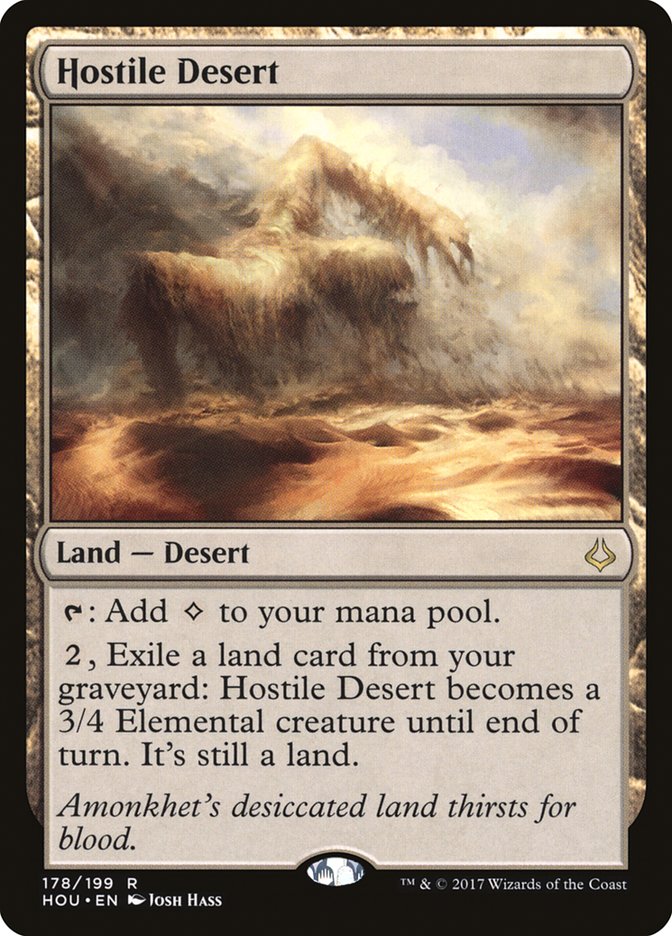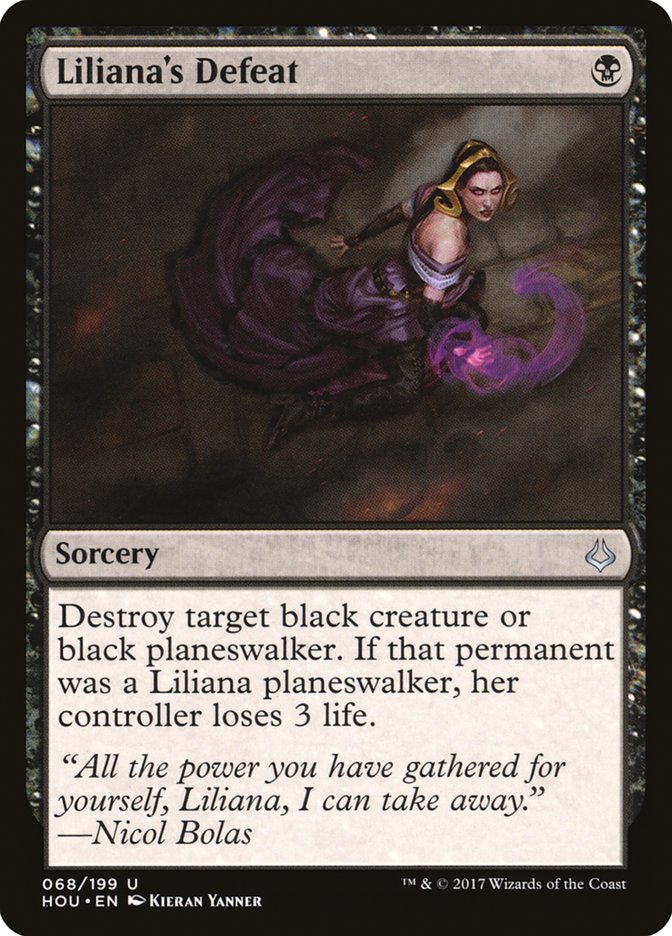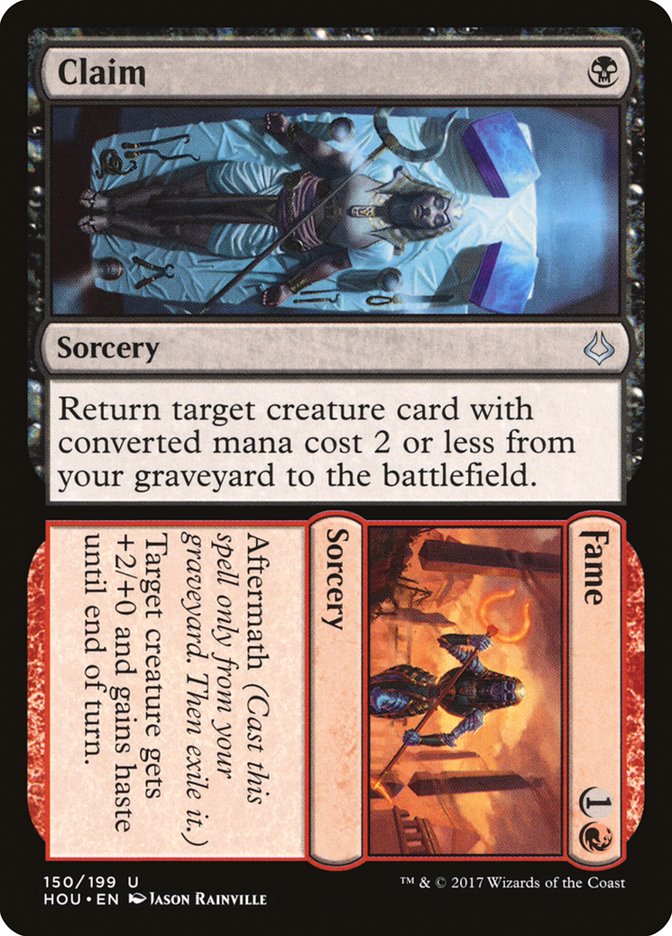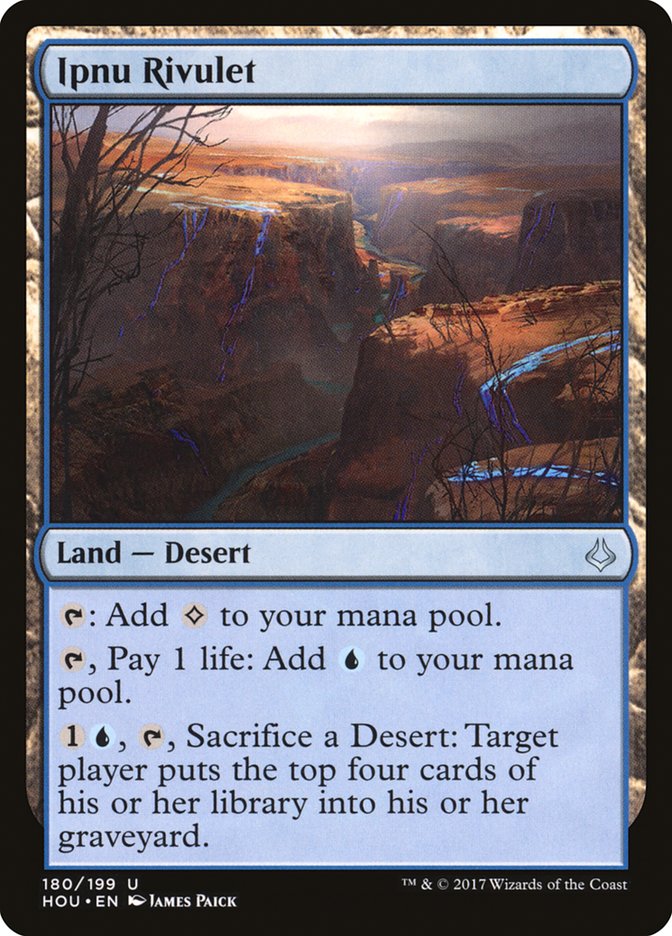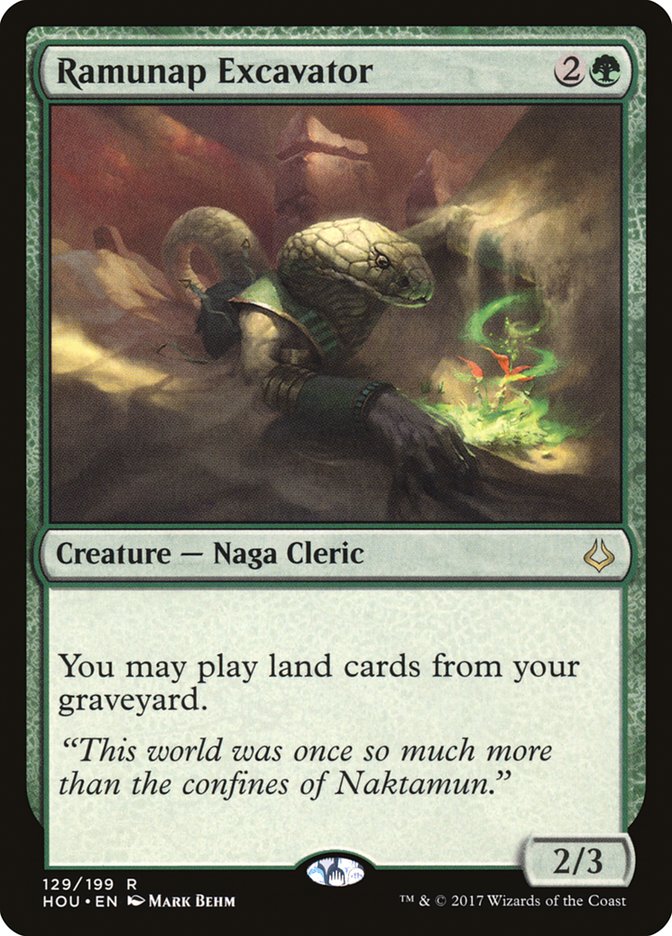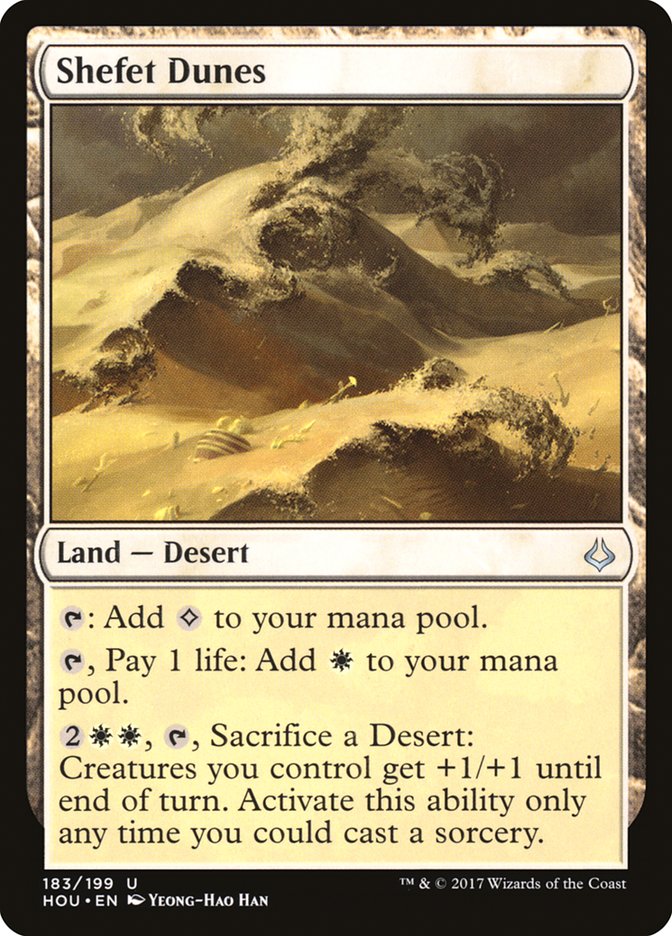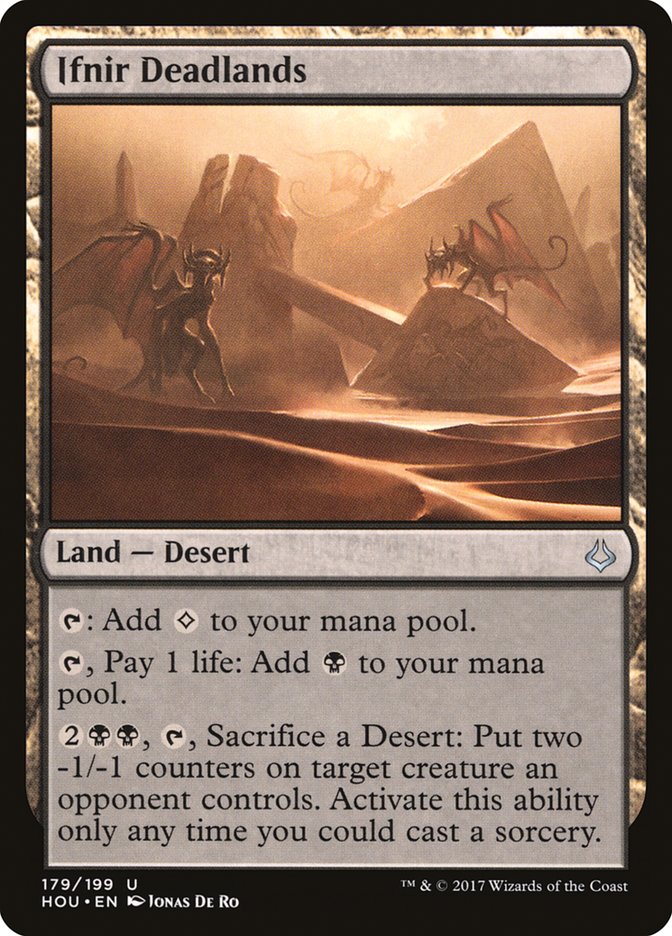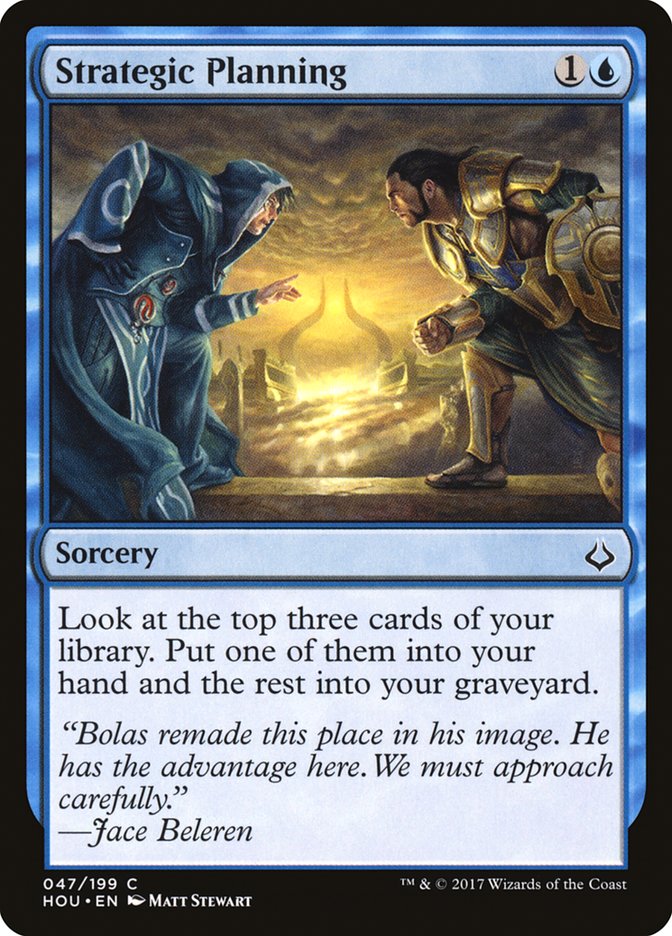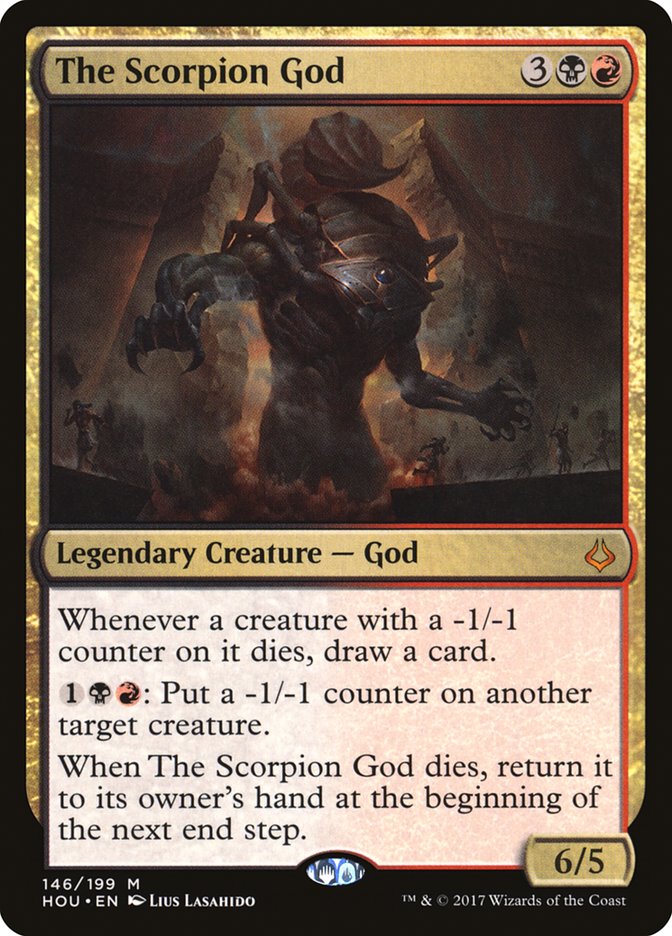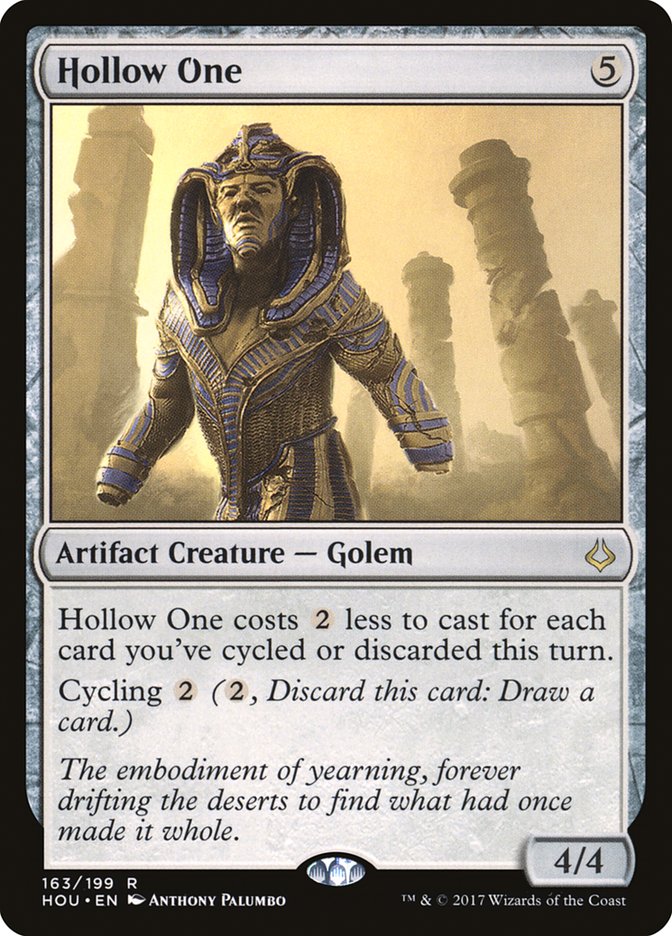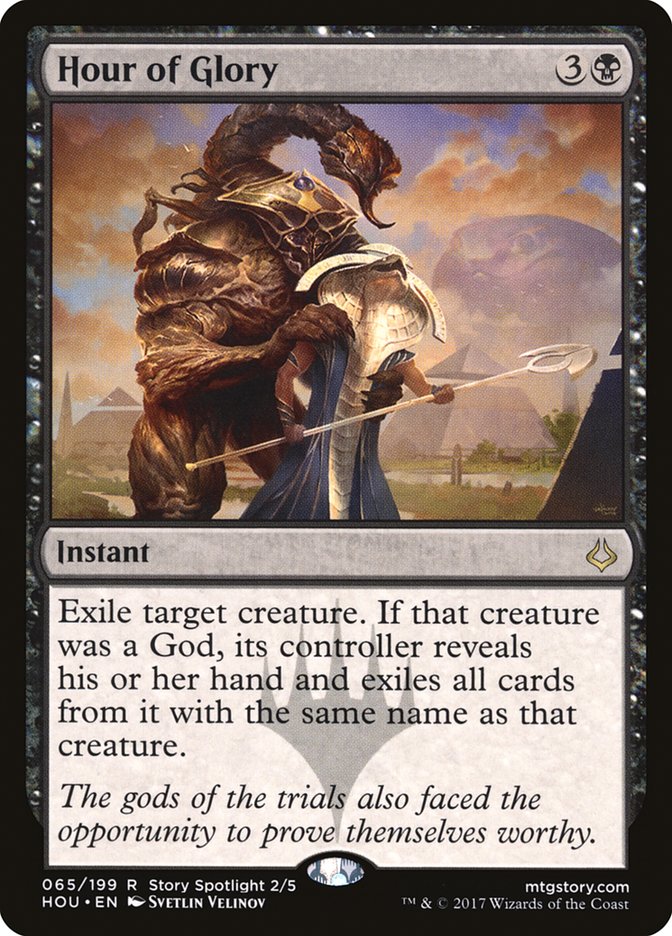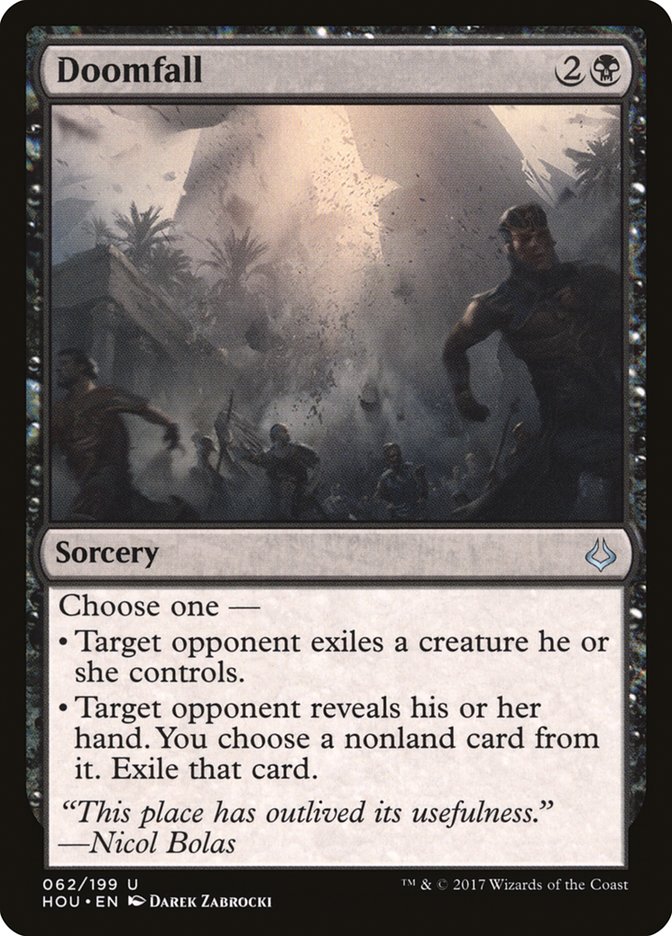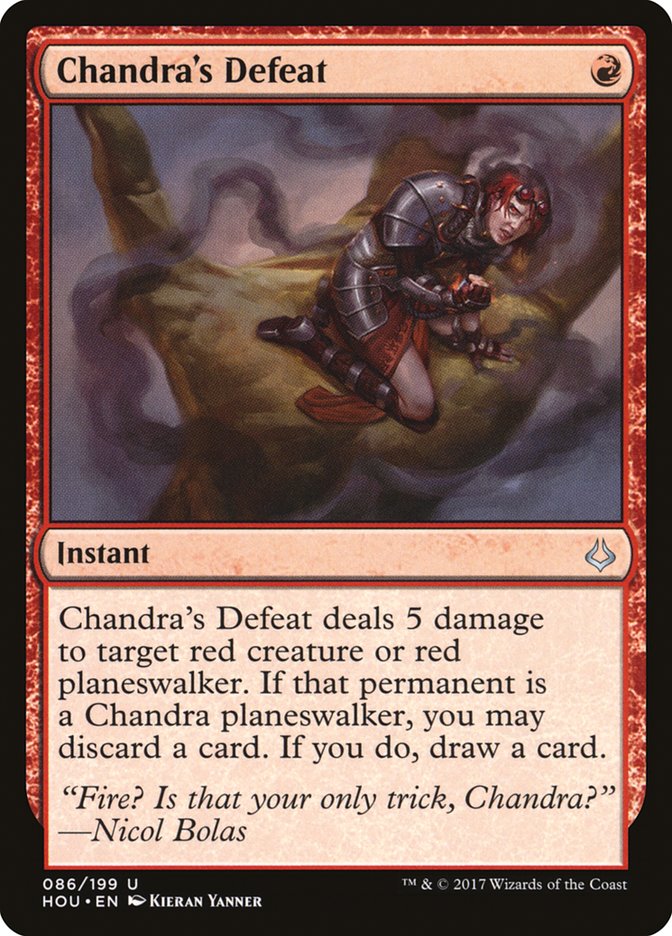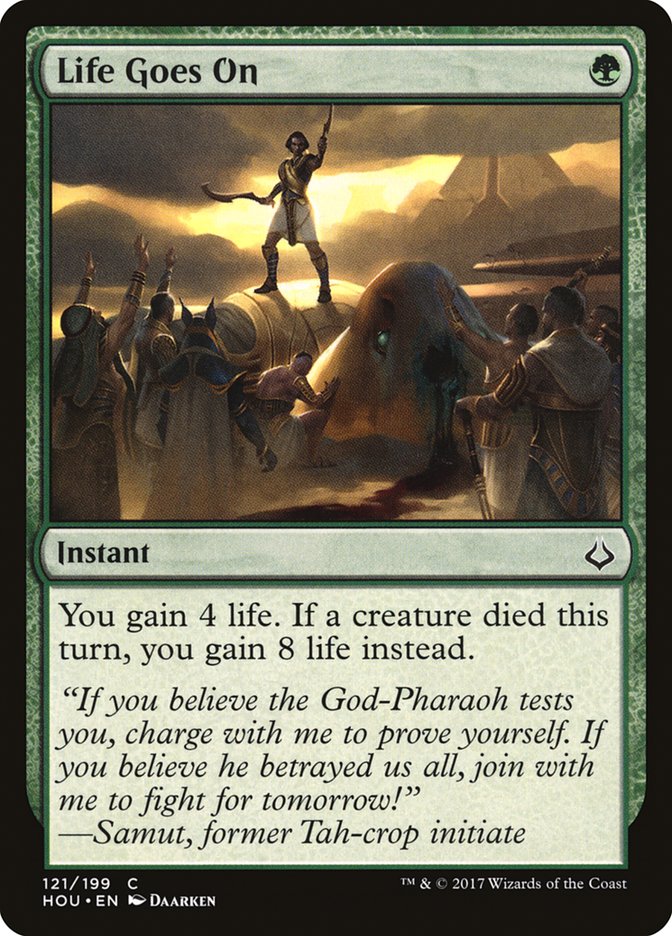Hour of Devastation has certainly read as a set with room to grow. There are, as I’ve said before, a lot of cards with potential that don’t necessarily have obvious homes. Now that I’ve had a chance to play with the cards in the set, I have a lot more thoughts on which of these cards fit best in Modern and Standard.
Modern
Let’s start with Modern. It’s hard enough to break into Modern that I’m not going to assume we’re on the same page about any cards in the set making it into Modern, so I’ll be starting simply with best rather than necessarily most underrated:
Top 10 Hour of Devastation cards for Modern, in order:
This feels kind of wrong, but if calling Mutavault the best card in a set is wrong, I’m not sure if I want to be right. This card certainly isn’t as easy to use as Mutavault, but it has a lot going for it. 3/4 is a lot bigger than 2/2, and this threat doesn’t die to Lightning Bolt or Abrupt Decay. You won’t play games where you get to attack with it ten times, but honestly, that almost never happens with any creature-land in Modern. Their primary role is to threaten to attack or block more than to actually do either, and when you’re playing with fetchlands, this is fabulous as threatening both with ease. This is the kind of card whose presence just makes it much harder to cast a planeswalker or attack with a medium-sized creature.
Where most decks that play Mutavault play four, I think this is a card that you’ll usually want to play one or two of, possibly in addition to Mutavault, but I expect more decks to play it over time as people realize how great such a large body for such a small investment really is.
This one’s not exactly flashy or versatile, but it may be just what the doctor ordered for the format at the moment. Answering any of Death’s Shadow; Tasigur, the Golden Fang; Gurmag Angler; Liliana of the Veil; or Liliana, the Last Hope for a single mana is outstanding against any flavor of Death’s Shadow. This may not be an instant like Dark Betrayal, but when it only costs one mana, I don’t think it’s that important that it be an instant, and hitting Liliana is a huge bonus. Obviously, Modern is wide enough that this will only see a little sideboard play in small numbers, but it’s hard for a card to be the best at doing something, and this is the best card to do what it’s doing.
This is another Death’s Shadow-centric pick, but Modern’s still kind of a Death’s Shadow-centric format, so I’m comfortable with that. This card is a lot better in the Death’s Shadow aggro shells rather than the more midrange Death’s Shadow Grixis we’ve been seeing, but it might be powerful enough to make people go back to focusing more on attacking with Death’s Shadow and potentially casting Temur Battle Rage. This makes it very easy for you to kill a tapped-out opponent regardless of whether you had a creature on the battlefield.
This one feels like a bold claim, but this card asks so little and offers so much. There are fringe Mill decks in Modern, and I have to imagine they’d happily add this card. That use accounts for a decent portion of its stock in Modern, since it’s a really nice freeroll there, but where I really like this is if we ever get back to a blue-based Dredge deck. This isn’t the kind of card that’s fast enough to let you keep a hand with the plan of activating this on yourself to try to get going, clearly, but it might be a nice way to pick up a little value along the way, especially if you’re playing against hate and looking for a way to restart your engines after a Tormod’s Crypt effect.
Once we’ve seen a successful Collected Company deck with Crucible of Worlds, this feels like a pretty easy pick. The idea of playing this with Azusa, Lost but Seeking; Knight of the Reliquary; Ghost Quarter; and Collected Company simultaneously sounds very powerful and like something I really wouldn’t want to do in Modern. Yes, these things are great together, but are they really better than Eternal Witness and Renegade Rallier if we’re trying to get lands back from our graveyard? Is that even what we want to be doing with our Collected Companies, rather than just deploying synergistic threats?
Maybe that’s not the right way to use Ramunap Excavator. Maybe it belongs in a midrange attrition deck like Jund that wants to cast it, immediately play a land from the graveyard, and then keep getting value from it if it happens to stay on the battlefield. That sounds a little underpowered to me, but there might be something here.
I really like this cycle of lands. At first, I was just looking at them as random colorless/colored lands to cast Eldrazi in Standard with random bonus text, but after playing with them, I think their abilities are surprisingly relevant and the cost to include them in a deck can be remarkably low, although, as it happens, there are a surprising number of forces working against them at the moment. In Modern, you often want all of your lands that only tap for a single color of mana to be basic lands so that you’re not too vulnerable to Blood Moon. Given that, I think this card isn’t likely to see much play outside of mono-white decks.
It’s also easy to look at the effect and compare it to Gavony Township and ask why you’d ever want this, but the ability to tap for White mana is extremely important here. I’m expecting this to only see play in mono-white aggressive decks, W/B Tokens, or white Eldrazi decks, but I think it could be great in all of those places.
Same as above: if your mana can support it, getting a removal spell built into your lands is fantastic, but because it’s less synergistic with a particular strategy, it’s less clear to me where it would be played.
Anticipate is kind of the definitive “exactly not good enough for Modern” kind of card. I’ve seen it pop up a few times, but it always seems pretty weird that that’s the best they could find. Strategic Planning is of a very similar power level; being a sorcery is a lot worse, but putting cards in the graveyard is a lot better. What Strategic Planning has going for it is that there’s less competition for cards like this that put things directly into the graveyard, especially outside of green, and it’s easier to build a deck that really pushes the amount of value you can get from putting cards in the graveyard in Modern. I don’t know exactly where this will show up, but it has a lot of synergy with Past in Flames and Pyromancer Ascension, for example (and plays well with Baral, Chief of Compliance and Goblin Electromancer). It just feels like the kind of card you want to keep in mind.
This feels like a versatile “mirror-breaker” type of card. If they don’t have Path to Exile, it’s going to be a nightmare to deal with in a long game, and if they are playing Path to Exile, there’s a good chance they won’t have one on hand and that their creatures will be terrible against this. It’s really slow for the format, but if your opponent’s playing some sort of Jund creature deck, it feels like this should be a pretty great trump.
This is a unique enough effect that it has to make the list. Again, I’m not sure exactly where I’d want to use it, but I do know that I can cast a 4/4 for one mana on turn 2 if I cast Faithless Looting first. I also know that that 4/4 would live through Lighting Bolt, Fatal Push, and Abrupt Decay. I don’t think that’s enough of an upside that I’d want to play this in most of the decks I can currently think of that want to play Faithless Looting, but there’s always a chance.
I don’t think these are the only cards that have a chance in Modern. I left off Conley Woods’s pet cards The Locust God and Steward of Solidarity. There’s a small chance Oketra’s Last Mercy, or, perhaps more realistically, Life Goes On will find their way into sideboards against Burn. I’m pretty sure Bontu’s Last Reckoning is a terrible card, but some Modern deck might just find that it needs a three-mana sweeper.
Long-term, maybe some kind of Cat Tribal deck will show up and create a home for Adorned Pouncer or Pride Sovereign. Scavenger Grounds could potentially be chosen in some spots over Bojuka Bog as a land that answers the graveyard, though the symmetry and cost of the effect is somewhat undesirable (the fact that you can play it whenever you want to play a land and use it at instant speed is very nice, though). Champion of Wits is currently fantastic in Standard and could easy make the jump at some point; in fact, I’m already wondering if I’ll look stupid in a month for not calling it right away as a multi-format all-star.
Standard
It’s easier to see Hour of Devastation’s immediate impact on Standard. You probably shouldn’t need me to tell you about Champion of Wits, Abrade, Hour of Devastation, Hour of Promise, Earthshaker Kenra, Ramunap Ruins, and the decks they’ve found their way into. Instead, I want to highlight five underappreciated metagame cards from the set:
It’s pretty hard to stomach four-mana removal in Constructed, and this is no Utter End, but I think it solves enough specific problems that midrange and controlling black decks should consider having access to one or two.
Black has had a real problem dealing with Westvale Abbey, and this is a clean answer. Glorybringer and Hazoret the Fervent both demand instant-speed answers, and while this may not be as good as Grasp of Darkness at dealing with those, it also answers Rhonas the Indomitable, Elder Deep-Fiend, or anything else you need to kill. Exiling is also extremely important for a wide variety of cards that come back from the graveyard in one way or another, like Scrapheap Scrounger, Champion of Wits, or Angel of Sanctions.
Doomfall similarly has impressed me. It’s an Edict effect that answers any threat, which is nice, especially if you’re a removal-heavy deck that’s worried about someone beating you with a single sticky threat like Bristling Hydra, and the fact that it doubles as a discard spell means that it’s not dead against control decks or decks that produce tokens or other meaningless creatures that you could never afford to spend three mana to kill. Instead of your Edict being blank against Oketra’s Monument, it at least becomes the perfect answer to Dusk // Dawn.
When a cycle of color hosers is printed, it’s pretty easy to figure out where you’re supposed to use them, but I want to call attention to Chandra’s Defeat in particular as the right tool for the job at the moment, as Mono-Red Aggro is looking like a respectable deck and it can sideboard into a bigger plan with Chandra, Torch of Defiance or Glorybringer. As a one-mana instant, Chandra’s Defeat can be cast early enough to protect your life total against early threats, but it also scales up enough to answer the top of their deck. If that were all this card did, it would be nice but likely too narrow; as it happens, Temur Energy also uses Glorybringer and Chandra, so a few of them can be nice to bring in in that matchup as well, making this a fantastic sideboard card.
Speaking of respect for the red aggro deck, part of what makes that deck so dangerous is that it has a huge amount of reach in its lands and burn spells, so even if you survive the early rush, if you don’t have a big cushion, you need to find a way to end the game in a hurry or they’ll have inevitability. Life Goes On is a great rate on a card that’s remarkably powerful at fighting against that strategy.
Ramunap Ruins has already brought people around to playing Mono-Red Aggro, and I think Shefet Dunes might singlehandedly be enough to splinter Oketra’s Monument decks into W/U and Mono-White to take full advantage of this card. I think there’s a good chance that W/U should be playing one to two anyway, but it can really disrupt other lands entering the battlefield untapped. In Mono-White, there’s essentially no drawback to playing this card, and the effect is massive when you’re trying to kill people with a bunch of 1/1 tokens.
***
This feels like a somewhat arbitrary list of fairly narrow cards, but these are the cards that I’ve tried out that specifically felt like they exceeded my own expectations. I still don’t feel like I’ve learned where everything in this set fits, but this feels like a good start on highlighting cards that may go overlooked.


